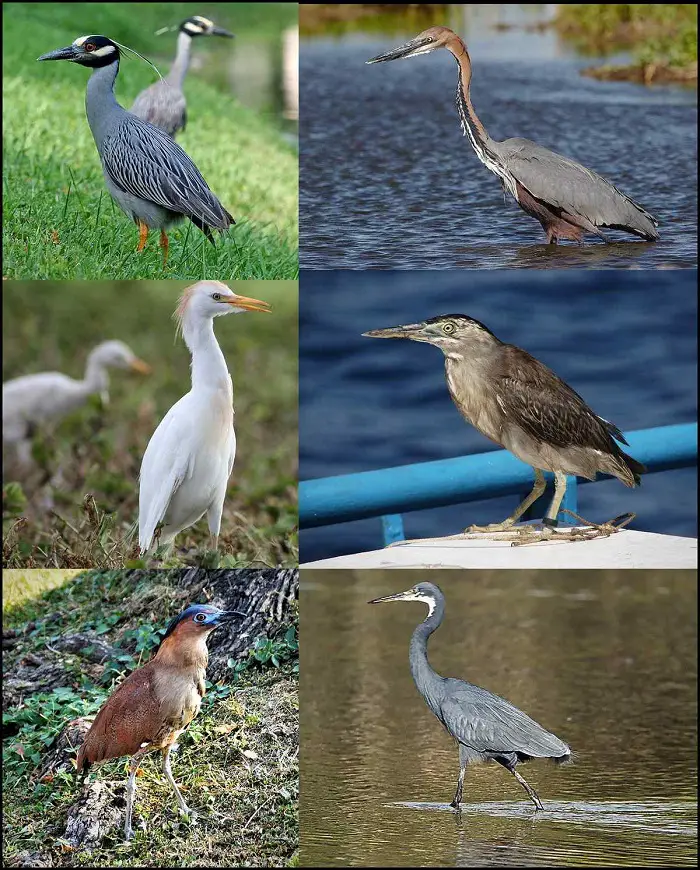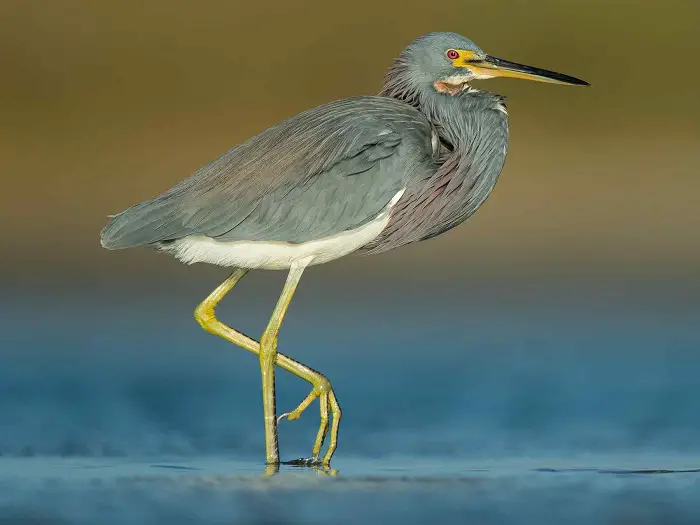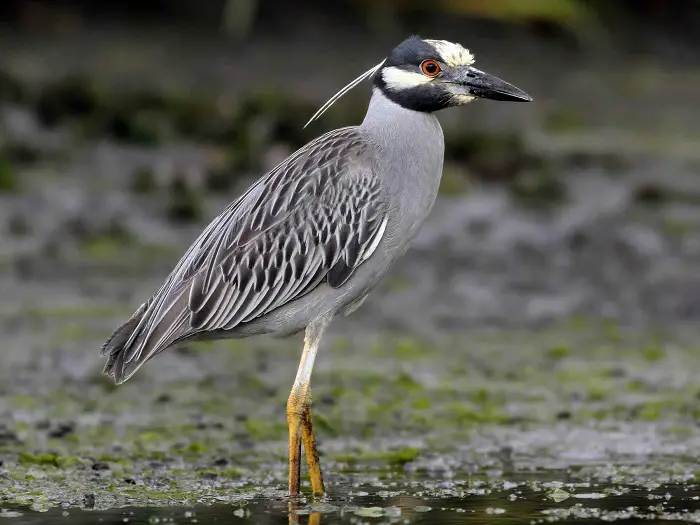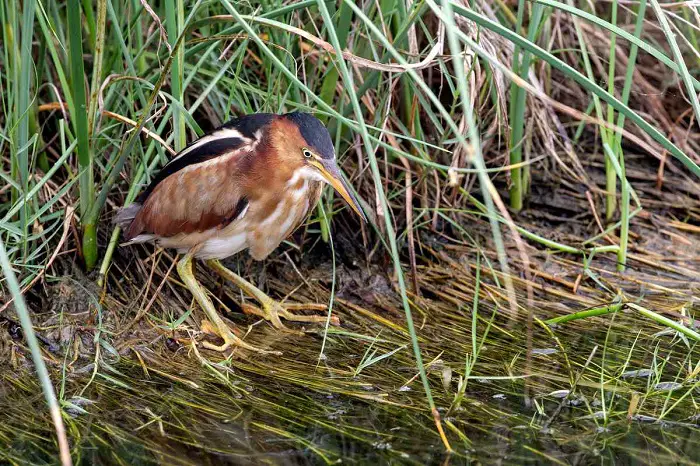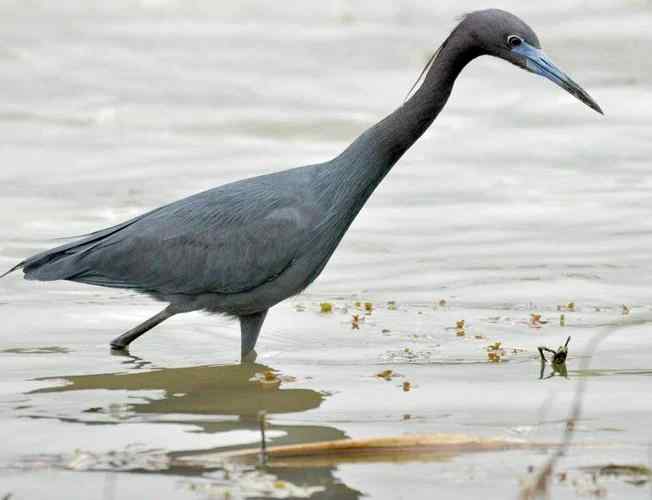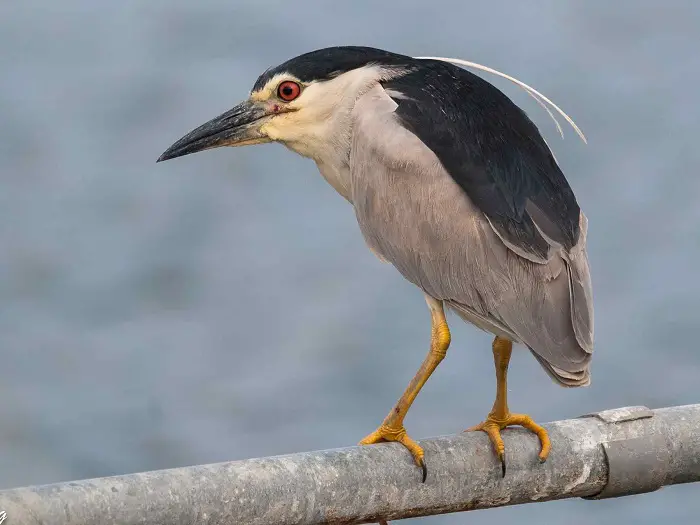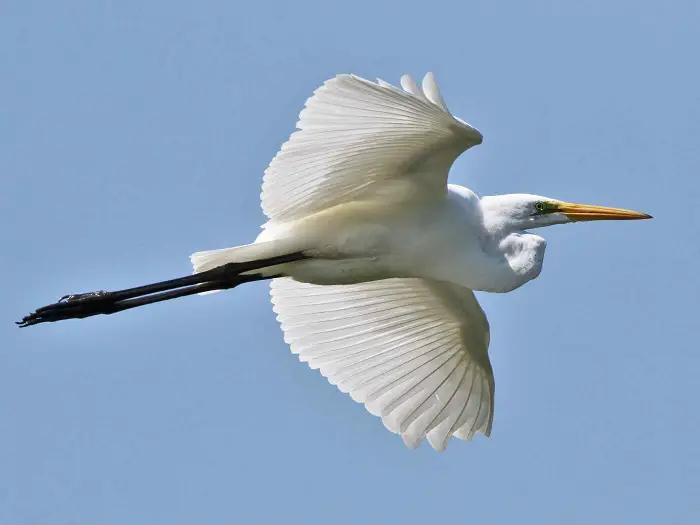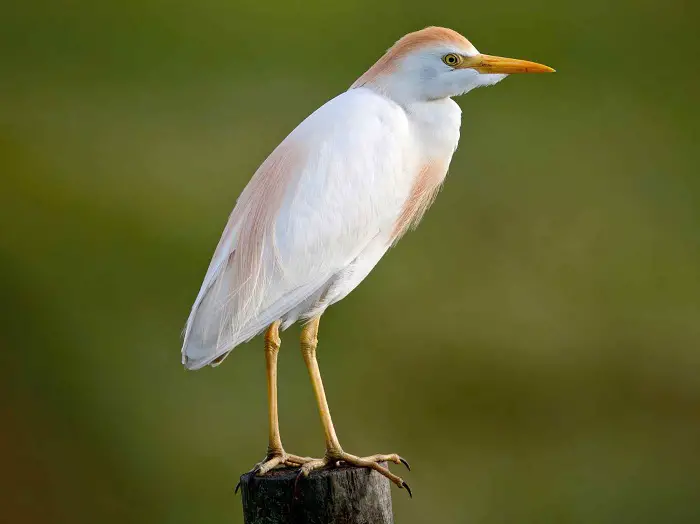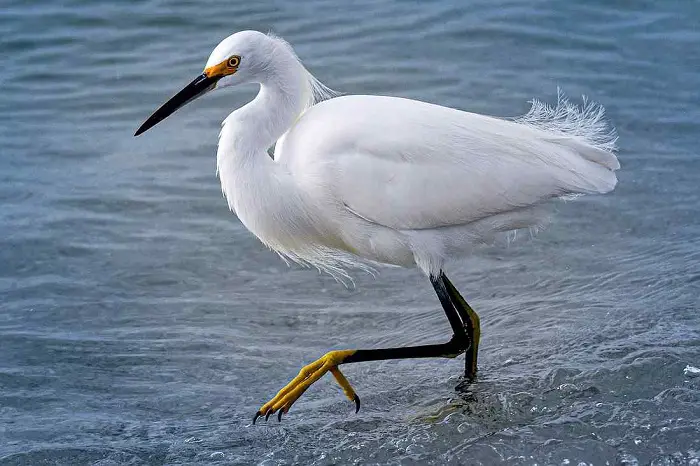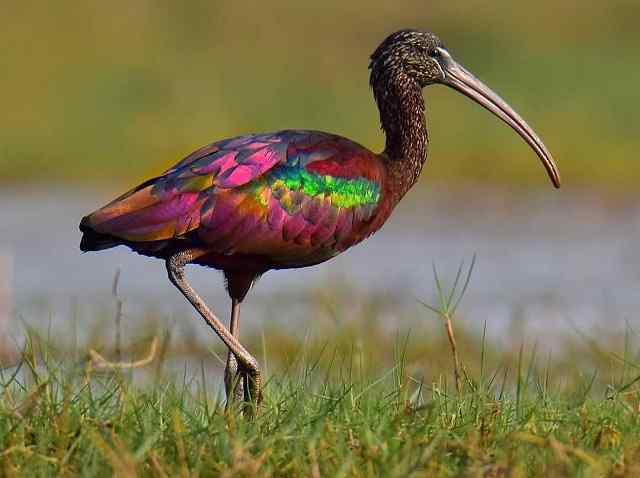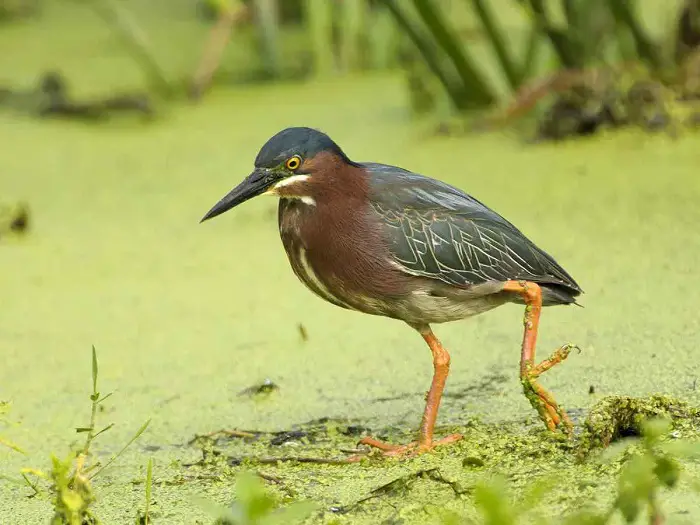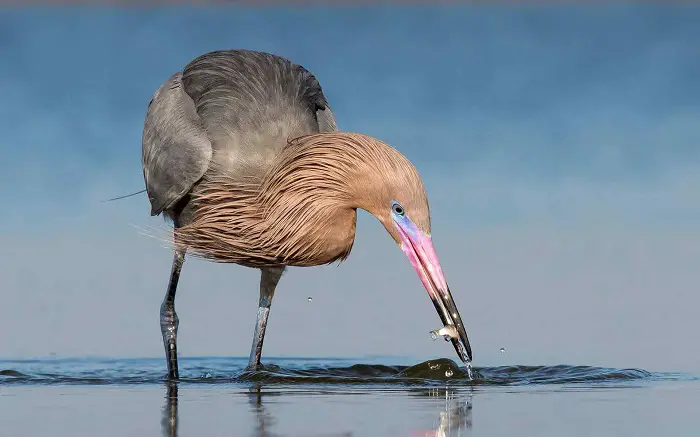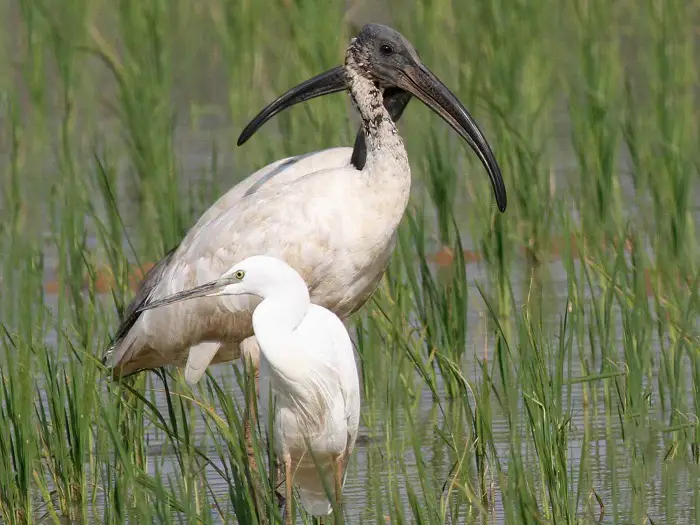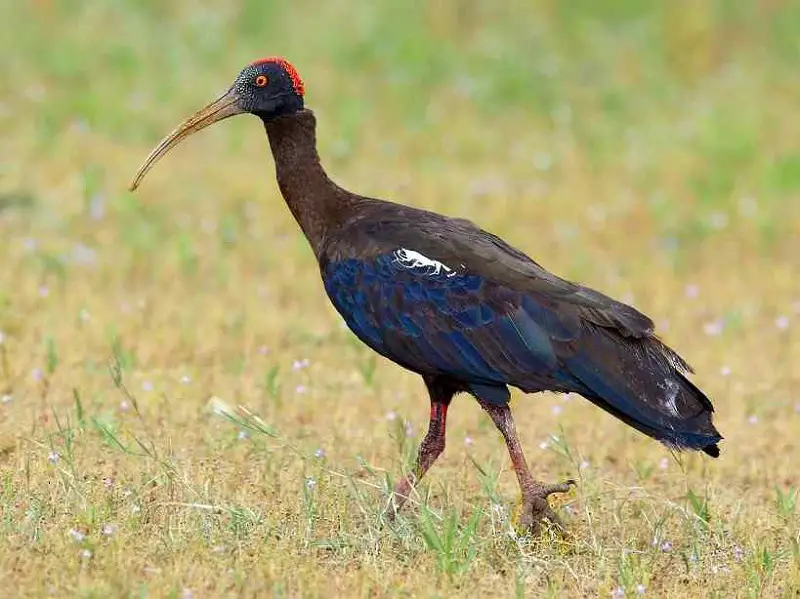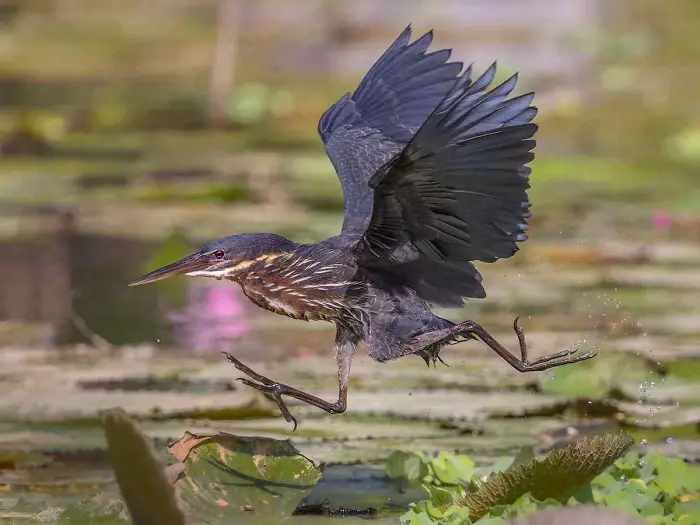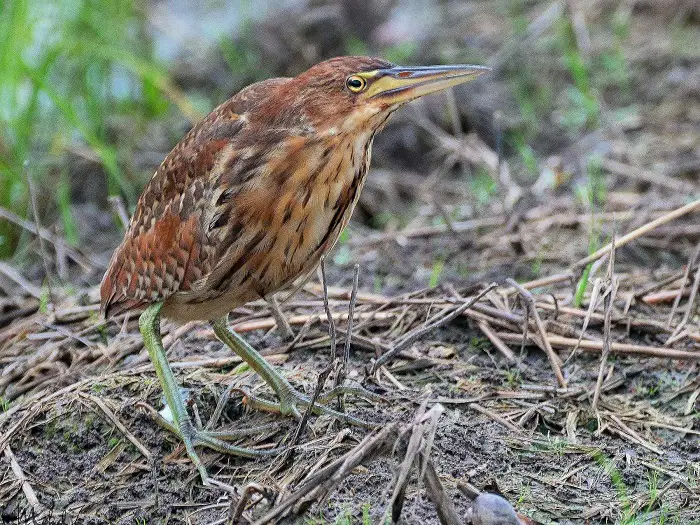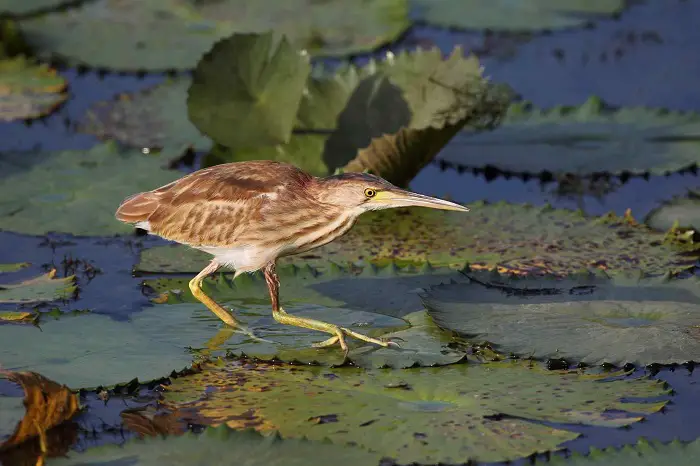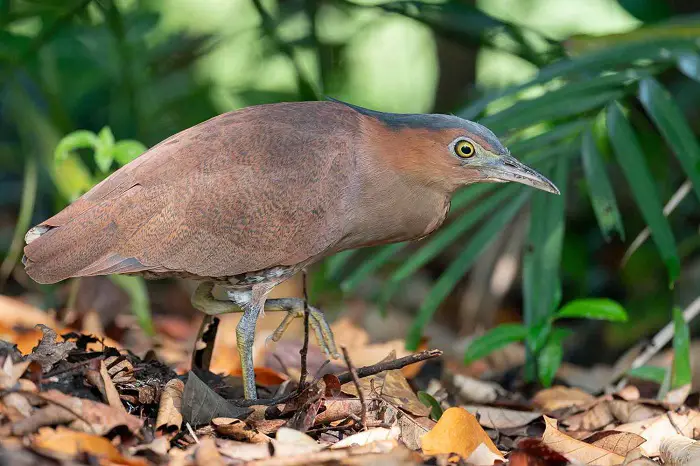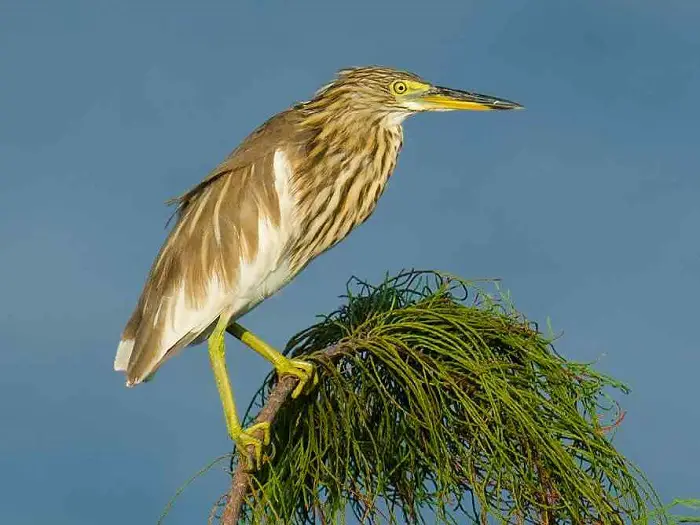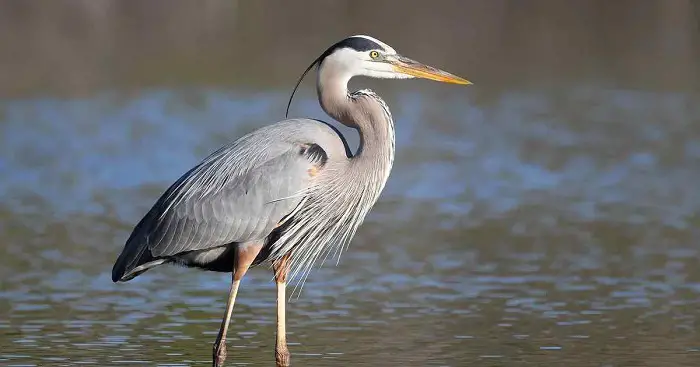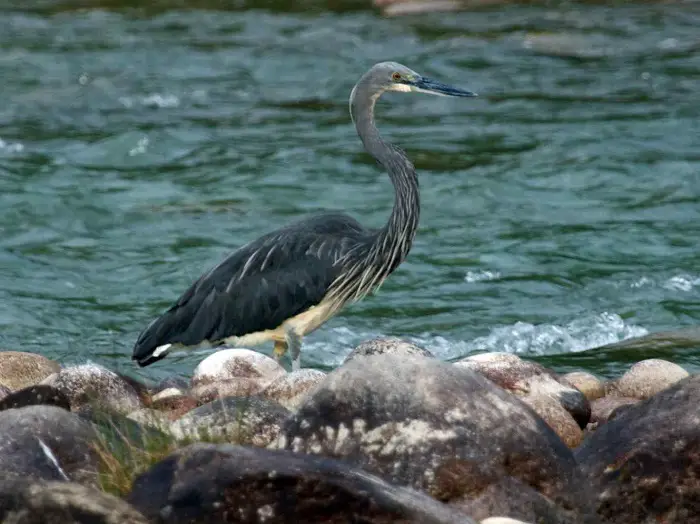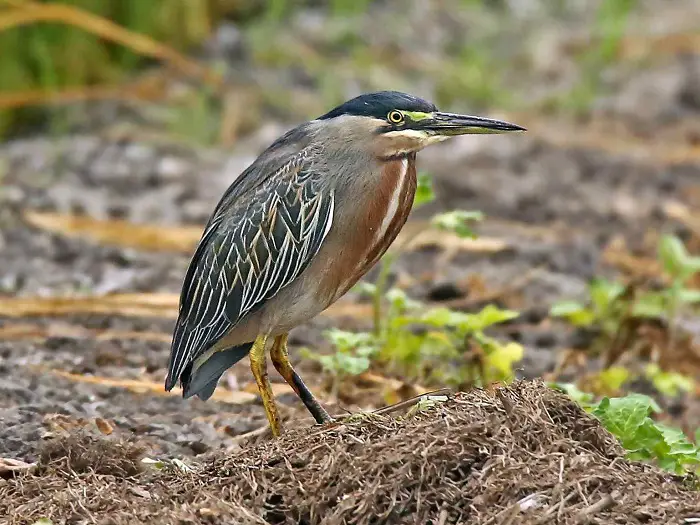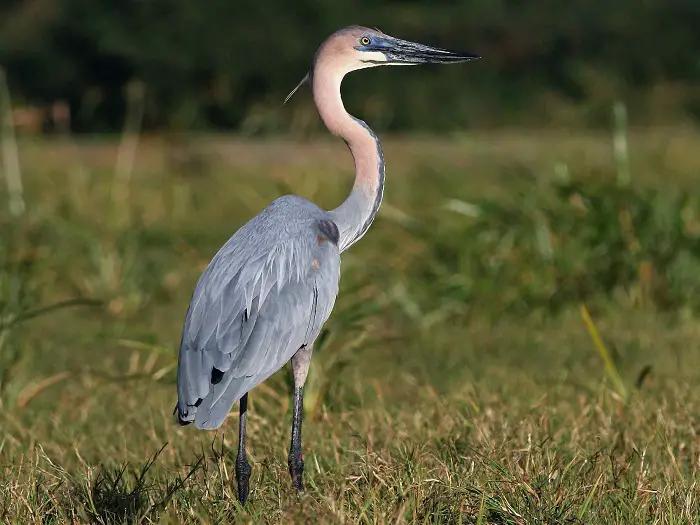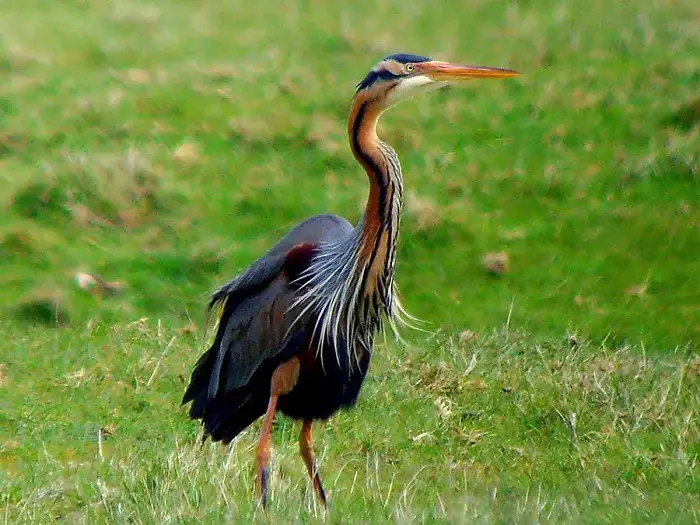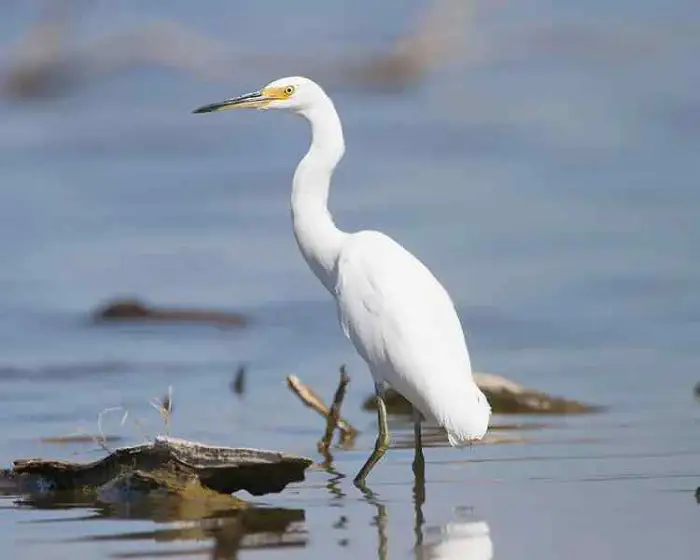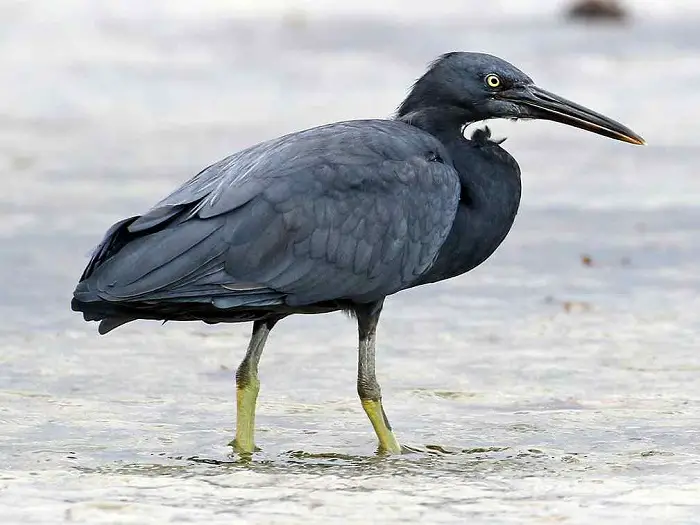The Heron is a type of bird that belongs to the family Ardeidae. It is a large wading bird known for its long legs, long neck, and characteristic S-shaped neck when in flight. Herons are found in various parts of the world, including Africa, Asia, Europe, Australia, and the Americas. There are many types of heron available in the world. I shall review the most common types of heron for you.
Herons have a distinctive appearance, with long beaks designed for capturing prey and specialized feathers that enable them to wade in water without getting wet. They are known for their graceful movements and patient hunting behavior, often standing still or moving slowly while waiting for prey to come within striking distance.
In addition to their physical characteristics, herons are known for their unique courtship displays, which involve elaborate movements, calls, and plumage displays. They typically nest in colonies, often in trees or reed beds near water bodies, where they build large nests made of sticks and other materials.
Most Common Types of Heron
There are different species of herons, such as the Great Blue Heron, Grey Heron, Black-crowned Night Heron, and Little Blue Heron, among others. These birds typically inhabit wetland environments, such as marshes, swamps, lakes, rivers, and coastal areas. They are skilled hunters and live mainly on fish, amphibians, small mammals, insects, and other small creatures in or near water.
1. Great Blue Heron
The Great Blue Heron (Ardea herodias) is a large wading bird and one of the most recognizable heron species. It is native to North and Central America and can be found in various habitats, including marshes, swamps, lakes, rivers, and coastal areas.
Great Blue Herons are known for their impressive size, standing about 3 to 4 feet tall (0.9 to 1.2 meters) with a wingspan of 5.5 to 6.6 feet (1.7 to 2 meters). They have long legs, a long neck, and a dagger-like beak, which they use to catch their prey. Their plumage is predominantly blue-gray, with a reddish-brown neck and a black stripe extending from their eye to the back of their head.
These herons are highly skilled hunters and primarily feed on fish. They wade slowly or stand motionless in the water, patiently waiting for fish to swim by. Once their prey is within striking range, they quickly extend their necks and stab at the fish with their sharp beaks. Great Blue Herons may also consume other small aquatic animals, including amphibians, reptiles, small mammals, and insects.
The Great Blue Heron is considered a majestic and iconic bird, often observed in wetland areas and appreciated for its grace and beauty. It serves as an indicator species for the health of wetland ecosystems and plays a vital role in maintaining the conservation of aquatic ecosystems through its predatory habits.
2. Types of Heron: Tri-colored Heron
The Tri-colored Heron (Egretta tricolor) is a medium-sized wading bird belonging to the heron family Ardeidae. Other names, such as the Louisiana Heron or the Louisianian Heron, also know it. This species is native to the Americas and can be found in North, Central, and South America.
Tri-colored Herons are named for their distinctive plumage, which consists of a mix of blue-gray, purple, and white feathers. They have long necks, slender bodies, and long legs adapted for wading in shallow water. The bill is relatively long and slender, which aids in capturing prey.
3. Yellow-Crowned Night Heron
The Yellow-crowned Night Heron (Nyctanassa violacea) is a medium-sized heron species in Ardeidae. It is primarily found in the Americas, including parts of North, Central, and South America, as well as the Caribbean.
As the name suggests, the Yellow-crowned Night Heron has a distinctive yellow crown, contrasting with its black or dark gray body. It also has red or orange eyes and a stout, slightly curved bill. Juveniles have a more brownish plumage with streaks, and their eyes are yellow rather than red or orange.
These herons typically inhabit various wetland habitats, including marshes, swamps, mangroves, and coastal areas. Unlike other heron species, the Yellow-crowned Night Heron is more active during the twilight hours and at night, hence its name. However, it can also be observed during the daytime.
4. Types of Heron: Least Bittern
The Least Bittern (Ixobrychus exilis) is a small heron species native to North and Central America. It is the smallest Heron found in North America and belongs to the heron family Ardeidae.
The Least Bittern has a compact body of about 11 to 14 inches (28 to 36 centimeters) and a wingspan of around 16 to 18 inches (41 to 46 centimeters). It has a short neck, a thick bill, and a brownish overall plumage that provides excellent camouflage in wetland habitats. The male and female Least Bitterns have similar appearances, with the male slightly larger than the female.
5. Little Blue Heron
The Little Blue Heron (Egretta caerulea) is a medium-sized heron species native to the Americas. It is found primarily in North, Central, and South America and parts of the Caribbean.
The Little Blue Heron is named for its bluish-gray plumage, transitioning from a slate blue color during its juvenile stage to a solid bluish-gray color as an adult. Adults have a dark-tipped bill and yellow eyes, while juveniles have a mottled white and bluish-gray plumage with greenish-yellow eyes and a pale-tipped bill.
The Little Blue Heron is admired for its elegant appearance, striking blue plumage, and association with wetland ecosystems. It contributes to these habitats’ biodiversity and ecological balance and serves as a reminder of the importance of preserving and protecting wetland environments.
6. Types of Heron: American Bittern
The American Bittern (Botaurus lentiginosus) is a prominent wading bird member of the heron family Ardeidae. It is native to North America and can be found in various wetland habitats, including marshes, swamps, and other areas with dense vegetation and shallow water.
American Bitterns have a stocky build with a height ranging from about 2 to 3 feet (60 to 90 centimeters). They have a mottled brown and buff plumage that provides excellent camouflage among the reeds and cattails of their wetland habitats. Their plumage patterns allow them to blend seamlessly with their surroundings, making them difficult to spot.
7. Black-Crowned Night Heron
The Black-crowned Night Heron (Nycticorax nycticorax) is a medium-sized heron species found in various regions across the globe, including North and South America, Europe, Africa, and Asia. It is a member of the heron family Ardeidae.
Black-crowned Night Herons are characterized by their black crown and back, pale gray wings, and white underparts. They have red or maroon eyes and yellow legs. Juveniles have a brownish plumage and lack the black crown, which develops as they mature.
These herons are primarily nocturnal or crepuscular, most active during the late evening and early morning hours. They are often seen foraging in wetland habitats, including marshes, swamps, rivers, lakes, and coastal areas. However, they can also be found in urban environments near bodies of water, such as parks and gardens.
8. Types of Heron: Great Egret
The Great Egret (Ardea alba) is a prominent wading bird member of the heron family Ardeidae. It is native to many parts of the world, including North and South America, Europe, Africa, Asia, and Australia. It is also referred to as the Great White Egret.
Great Egrets are known for their majestic appearance and striking plumage. They have a white or cream-colored body, a long neck, and a long, S-shaped neck in flight. During the breeding season, they develop long, delicate plumes on their backs and necks, which they use for courtship displays.
9. Cattle Egret
The Cattle Egret (Bubulcus ibis) is a small heron species belonging to the heron family Ardeidae. It is native to Africa but has expanded its range and can now be found in many parts of the world, including North and South America, Europe, Asia, and Australia. It is also known as the “Buff-backed Heron.”
Cattle Egrets are compact birds aged about 18 to 22 inches (46 to 56 cm). They have a short neck, a stout bill, and a compact body. During the breeding season, adults develop buff-colored plumage on their head, neck, and back while the rest of their body is white. Outside of the breeding season, they have primarily white plumage.
The name “Cattle Egret” comes from their close association with large mammals, particularly domestic cattle, where they often forage for food. These birds have a unique feeding behavior called “cattle following.” They follow grazing livestock such as cattle or other large mammals, taking advantage of the insects flushed up as the animals move through the grass. They also feed on insects in other habitats, including wetlands, fields, and water edges.
10. Types of Heron: Snowy Egret
The Snowy Egret (Egretta thula) is a medium-sized heron species native to the Americas. It is found in various regions, including North America, Central America, South America, and the Caribbean. The Snowy Egret is known for its beautiful white plumage and elegant appearance.
Snowy Egrets have a slender body of about 22 to 26 inches (56 to 66 cm) and a wingspan of around 3.3 to 3.7 feet (1 to 1.1 meters). They have a distinctive slender, black bill, long legs, and bright yellow feet. During the breeding season, they develop long, delicate plumes on their back, neck, and head, which are used for courtship displays.
11. Glossy Ibis
The Glossy Ibis (Plegadis falcinellus) is a medium-sized wading bird that belongs to the Ibis family, Threskiornithidae. It is found in various parts of the world, including Europe, Africa, Asia, the Americas, and Australia. The Glossy Ibis is known for its iridescent plumage and distinctive long, curved bill.
Glossy Ibises have a slender body of about 20 to 26 inches (50 to 66 centimeters) and a wingspan of approximately 35 to 39 inches (90 to 100 centimeters). They have dark, glossy feathers that appear blackish-green or purple in certain lighting conditions. In flight, their wings may display a contrasting bronze or maroon color. They also have a long, downward-curved bill, which is used for probing the soil and water for prey.
12. Types of Heron: Green Heron
The Green Heron (Butorides virescens) is a small heron species found in North and Central America and parts of the Caribbean. It is known for its distinctive greenish plumage and its ability to blend in with its surroundings.
The Green Heron has a compact body, measuring about 16 to 18 inches (41 to 46 centimeters) in length. It has a dark, glossy greenish-blue back and wings, while its chest and belly are chestnut-colored. Its head is capped with a black crown, and it has a short, pointed bill that is yellow. Its neck is retracted during the flight, giving it a hunched appearance.
13. Reddish Egret
The Reddish Egret (Egretta rufescens) is a medium-sized heron species found primarily in coastal regions of North and Central America. It is known for its vibrant reddish-brown plumage, distinctive hairy appearance, and energetic foraging behavior.
Reddish Egrets have a slender body, measuring about 26 to 32 inches (66 to 81 cm). They have long, slender necks and legs, with a wingspan of approximately 42 to 46 inches (107 to 117 cm). Their plumage can vary, but typically they have a mix of reddish-brown and gray feathers. They also have a fuzzy appearance due to their long, wispy feathers on the neck, chest, and back. During breeding, they develop beautiful long plumes on their heads and necks.
14. Types of Heron: Black-Headed Ibis
The Black-headed Ibis (Threskiornis melanocephalus) is a bird species in parts of South Asia, including India, Sri Lanka, Nepal, and Bangladesh. It is also known by other names such as Oriental White Ibis or Black-headed White Ibis.
The Black-headed Ibis is a large bird with a body length of about 28 to 32 inches (70 to 81 cm) and a wingspan of approximately 50 to 55 inches (127 to 140 cm). It has predominantly white plumage, with contrasting black feathers on its head and neck. The bill and legs of the Black-headed Ibis are black.
These ibises are common in wetland habitats such as marshes, swamps, lakes, and riversides. They are skilled waders and foragers, feeding on various prey, including insects, crustaceans, small fish, frogs, and other aquatic creatures. They use their long, slender bills to probe the mud or water for food.
Black-headed Ibises are social birds and are often seen in flocks. They nest in trees or shrubs, constructing large stick nests in colonies. Both male and female ibises participate in nest building, incubating the eggs, and raising the chicks.
The Black-headed Ibis is appreciated for its striking appearance, particularly its contrasting black and white plumage. Its presence adds to the diversity and beauty of wetland ecosystems in the regions where it is found.
15. Red-Napped Ibis
The Red-naped Ibis, also known as the Indian Black Ibis (Pseudibis papillosa), is a large bird species belonging to the ibis family, Threskiornithidae. It is primarily found in South Asia, including India, Nepal, Bangladesh, and Southeast Asia.
The Red-naped Ibis is a distinctive bird with a length of about 30 to 34 inches (76 to 86 cm) and a wingspan of approximately 55 to 60 inches (140 to 152 cm). It has predominantly black plumage, glossy feathers, and a metallic sheen in certain lighting conditions. The head and upper neck are featherless and covered in red or reddish-orange skin, giving the bird its common name. The bill and legs are also black.
16. Types of Heron: Eurasian Spoonbill
The Eurasian Spoonbill (Platalea leucorodia) is a large wading bird belonging to the ibis and spoonbill family, Threskiornithidae. It is widely distributed across Europe, Asia, and parts of Africa. The Eurasian Spoonbill is known for its distinctive spoon-shaped bill, which sets it apart from other bird species.
The Eurasian Spoonbill has a height of about 31 to 35 inches (80 to 90 centimeters) and a wingspan of approximately 47 to 51 inches (120 to 130 centimeters). It has predominantly white plumage, with black flight feathers visible when the wings are spread. The most prominent feature of this bird is its long, flattened bill, which is spoon-shaped at the tip. During the breeding season, adults develop long, elegant plumes on the back of their heads and necks.
17. Black Bittern
The Black Bittern (Ixobrychus flavicollis) is a species of small Heron found in parts of Southeast Asia and northern Australia. It is known for its secretive behavior and black or dark brown plumage, which helps it blend in with its surroundings.
The Black Bittern is a fascinating bird appreciated by birdwatchers and naturalists for its elusive nature and striking appearance. Spotting one in its natural habitat can be a rewarding experience, given its tendency to remain hidden. The Black Bittern contributes to the ecological diversity of wetland ecosystems, where it plays a role in maintaining the balance of its prey populations.
18. Types of Heron: Cinnamon Bittern
The Cinnamon Bittern (Ixobrychus cinnamomeus) is a small heron species found in parts of Asia, including Southeast Asia, the Indian subcontinent, and parts of China. It is known for its beautiful cinnamon-colored plumage and its secretive nature.
The Cinnamon Bittern has a compact body, measuring about 15 to 16 inches (38 to 41 centimeters) in length. Its short neck and wingspan are approximately 23 to 26 inches (58 to 66 centimeters). The male and female have distinct plumage. The male has a cinnamon-colored head, neck, and upper body, with black streaks and spots. The lower body and wings are a pale buff color. The female is generally paler, with a streaked cinnamon and white appearance. Both genders have long, pointed bills that aid in catching their prey.
19. Yellow Bittern
The Yellow Bittern (Ixobrychus sinensis) is a small heron species found in parts of Asia, including Southeast Asia, the Indian subcontinent, and parts of China. It is known for its striking yellow plumage and its secretive behavior.
The Yellow Bittern is a relatively small heron, measuring about 11 to 15 inches (28 to 38 centimeters) in length. It has a compact body with a short neck and a wingspan of approximately 19 to 22 inches (48 to 56 centimeters). The male and female exhibit similar plumage. They have a yellow or yellowish-brown body with streaks and darker brown or black patches on their upper parts. The underparts are usually lighter in color. Their bills are long and pointed, aiding in capturing their prey.
20. Types of Heron: Malayan Night Heron
The Malayan Night Heron, also known as the Malaysian Night Heron, is a bird species scientifically known as Gorsachius melanolophus. It is a nocturnal heron in Southeast Asia, including Malaysia, Indonesia, Thailand, and the Philippines.
The Malayan Night Heron is relatively small, measuring about 18 to 19 inches (45 to 49 cm). It has a stocky build, a short neck, and a wingspan of approximately 30 to 34 inches (76 to 86 cm). The plumage of this Heron is predominantly brown or chestnut with distinctive white spots or streaks on the upper parts. It has a black crown with elongated feathers that form a bushy crest. The eyes are large and yellow, and the bill is long and pointed.
As its name suggests, the Malayan Night Heron is primarily active at night. It spends the daylight hours roosting in dense vegetation, often near water bodies such as swamps, mangroves, and marshes. It ventures out to hunt for small fish, crustaceans, insects, and prey in shallow water or on land at night.
21. Indian Pond Heron
The Indian Pond Heron (Ardeola grayii) is a small heron species found in various parts of Asia, including the Indian subcontinent, Southeast Asia, and parts of China. It is known for its adaptability to various habitats and its distinct plumage variations during different stages of its life cycle.
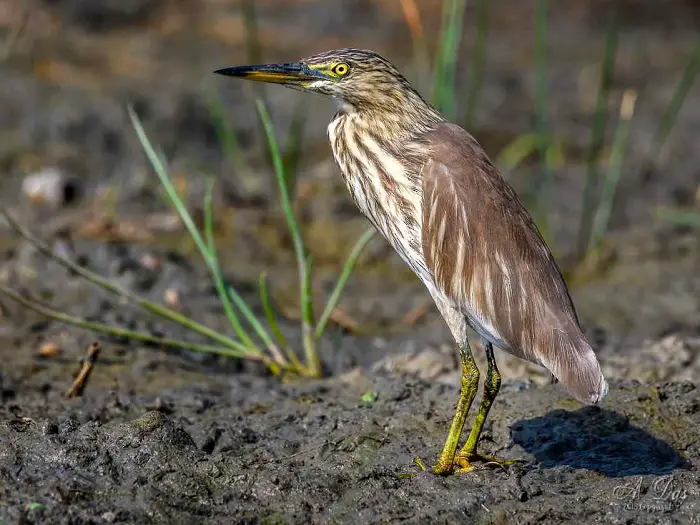
The Indian Pond Heron has a compact body, measuring approximately 16 to 18 inches (40 to 45 centimeters) in length. It has a short neck and a wingspan of about 28 to 33 inches (70 to 85 centimeters). The plumage of this heron species is highly variable and depends on the season and breeding stage. During the breeding season, adults display a rich chestnut color on their head, neck, and breast, with a white belly. Outside the breeding season, the plumage becomes predominantly pale or greyish-brown with streaks and spots.
22. Types of Heron: Chinese Pond Heron
The Chinese Pond Heron (Ardeola bacchus) is a small heron species native to parts of Asia, particularly China and neighboring countries. It is closely related to the Indian Pond Heron (Ardeola grayii) and shares some similarities in appearance and behavior.
The Chinese Pond Heron is compact, measuring approximately 16 to 18 inches (40 to 45 cm) in length. It has a short neck and a wingspan of about 28 to 33 inches (70 to 85 cm). The plumage of this heron species varies depending on the season and breeding stage. During the breeding season, the adult birds display a chestnut color on their head, neck, and breast, with a distinctive white throat. Outside the breeding season, their plumage becomes predominantly pale or greyish-brown with streaks and spots.
23. Grey Heron
The Grey Heron (Ardea cinerea) is a large wading bird belonging to the heron family Ardeidae. It is one of the most widespread heron species in Europe, Asia, and Africa. The Grey Heron is known for its majestic appearance, tall stature, and long, dagger-like bill.
The Grey Heron has a distinctive appearance. It stands about 3 feet (90 cm) tall with a wingspan of around 5.5 feet (167 cm). The plumage is predominantly gray, with a whitish head, black crest, and long, slender neck. The upper parts of the bird are gray, while the underparts are lighter in color. During the breeding season, the plumage can become more ornate, with elongated plumes on the head and neck and bright orange-yellow bills and legs.
The Grey Heron is a magnificent bird and a common sight in wetland areas. Its regal appearance and patient hunting behavior makes it a favorite subject for birdwatchers and photographers. Observing a Grey Heron in its natural habitat is a remarkable experience and a testament to the beauty of our avian fauna.
24. Types of Heron: White-Bellied Heron
The White-Bellied Heron (Ardea insignis) is a large and critically endangered heron species native to parts of Asia, particularly Bhutan, India, Myanmar, and possibly parts of China. It is one of the rarest heron species in the world and is known for its distinct appearance and threatened status.
The White-Bellied Heron is a tall bird, standing about 3 to 4 feet (91 to 122 cm), with a wingspan of around 6 feet (183 cm). It has a predominantly blue-gray plumage with a white belly, hence its common name. The neck is long and slender, and the bill is large and yellowish. The eyes are yellow, and the legs are long and gray.
These herons inhabit large rivers and their associated wetland habitats, including marshes, floodplains, and streams. They are highly territorial and require pristine riverine habitats with abundant fish populations for survival. The White-Bellied Heron is a patient hunter, standing still or moving slowly along the water’s edge, waiting for its prey. Its diet primarily consists of fish, but may also consume amphibians, reptiles, and other small aquatic creatures.
25. Striated Heron
The Striated Heron (Butorides striata) is a small heron species in various regions worldwide, including parts of Africa, Asia, Australia, and the Pacific islands. It is known for its slender build, distinctive striped plumage, and ability to adapt to various habitats.
The Striated Heron is relatively small, measuring about 15 to 18 inches (39 to 46 cm) in length. It has a short neck, a compact body, and relatively short legs. The plumage of this Heron is characterized by fine black and white stripes, which give it its name. The upper parts are predominantly dark gray or black, while the underparts are lighter in color, often with a rufous or buffy tinge.
26. Types of Heron: Goliath Heron
The Goliath Heron (Ardea goliath) is one of the largest heron species in the world and is known for its impressive size and stature. It is primarily found in sub-Saharan Africa, inhabiting wetland areas such as rivers, lakes, swamps, and estuaries.
The Goliath Heron is a massive bird, standing about 4 to 5 feet (120 to 150 cm) tall. Its wingspan can reach 7 to 9 feet (215 to 275 cm). It is one of the heaviest heron species, with individuals weighing around 5 to 8 kilograms (11 to 18 pounds). The plumage of the Goliath Heron is predominantly gray, with a lighter gray on the underparts. It has a long, thick neck and a large, dagger-like bill. During the breeding season, adults develop ornamental plumes on the neck and back.
These herons are primarily solitary birds and are often seen standing motionless at the water’s edge, patiently waiting for prey. Their diet consists mainly of fish, which they catch by wading slowly in shallow water or standing on rocks or vegetation, ready to strike with their powerful bills. They also feed on amphibians, reptiles, small mammals, and occasionally birds.
27. Purple Heron
The Purple Heron (Ardea purpurea) is a medium-sized heron species known for its beautiful plumage and elegant appearance. It can be found in parts of Europe, Asia, and Africa and is typically associated with wetland habitats such as marshes, swamps, and rice fields.
The Purple Heron is a slender bird, measuring about 31 to 39 inches (80 to 100 cm), with a wingspan of approximately 59 to 66 inches (150 to 168 cm). It has a long neck and a dagger-shaped bill. The plumage of this heron species is predominantly grayish-brown, with a glossy purple or purplish-brown hue on the upper parts. The head and neck exhibit a darker purple color during the breeding season. The underparts are generally lighter in color, ranging from whitish to buff.
These herons are primarily active during the day and are known for their stealthy hunting techniques. They wade in shallow water or stand motionless at its edge, waiting for prey to approach. Their diet consists mainly of fish, amphibians, crustaceans, insects, and other small aquatic creatures.
28. Types of Heron: Little Egret
The Little Egret (Egretta garzetta) is a small heron species that belongs to the Egret family Ardeidae. It is widely distributed across various regions, including Europe, Asia, Africa, and Australia. The Little Egret is known for its delicate appearance, graceful movements, and striking white plumage.
The Little Egret is a medium-sized heron, measuring about 22 to 26 inches (55 to 65 cm), with a wingspan of approximately 35 to 39 inches (88 to 98 cm). It has a slender body, a long neck, and long, thin legs. During the breeding season, adults develop ornamental plumes on their backs and chest, which add to their aesthetic appeal.
29. Pacific Reef Egret
The Pacific Reef Egret (Egretta sacra) is a medium-sized heron species commonly found along the coasts and islands of the Pacific Ocean, particularly in tropical and subtropical regions. It is closely related to the Little Egret (Egretta garzetta) and shares some similar characteristics but has distinct features and adaptations for its coastal habitat.
The Pacific Reef Egret exhibits two distinct color morphs: a white morph and a dark morph. The white morph has pure white plumage, while the dark morph has slate-gray to blackish plumage. Both morphs have long necks, slender bodies, and long legs, typical of heron species. The bill is long and slender, and the eyes are yellow.
This heron species is commonly found in rocky coastlines, coral reefs, mangroves, and other coastal habitats. It feeds on various prey, including fish, crustaceans, mollusks, and small reptiles. The Pacific Reef Egret employs different hunting techniques depending on its surroundings. In rocky areas, it may patiently wait and ambush prey; in shallow waters, it may actively search for food by wading and using its sharp bill to spear or grab its prey.
30. Types of Heron: Western Reef Egret
The Western Reef Egret (Egretta gularis) is a medium-sized heron species native to coastal regions and islands in the western Indian Ocean and the Red Sea. It is closely related to the Pacific Reef Egret and shares some similar characteristics but has distinct features and adaptations for its coastal habitat.
The Western Reef Egret, as its name suggests, is commonly found in reef environments, rocky coastlines, and tidal flats. It exhibits two distinct color morphs: a white morph and a dark morph. The white morph has pure white plumage, while the dark morph has gray to dark slate-colored plumage. Both morphs have a long neck, a slender body, and long legs, characteristic of heron species. The bill is long and slender, and the eyes are yellow.
These herons are primarily active during the day and feed on prey, including fish, crustaceans, mollusks, and other tiny marine organisms. They employ different hunting techniques depending on their surroundings. In rocky areas and reefs, they may patiently wait and ambush prey, while in shallow waters and tidal flats, they actively search for food by wading and using their sharp bill to spear or grab their prey.
During the breeding season, the Western Reef Egret forms monogamous pairs. The nests are built in trees or shrubs, often near water bodies. The female typically lays a clutch of 2 to 4 eggs, and both parents take turns incubating the eggs and caring for the chicks.
The conservation status of the Western Reef Egret is generally stable, and it is not considered a globally threatened species. However, local populations may face habitat loss, disturbance, and pollution in some areas. Conservation efforts focused on protecting and managing coastal habitats, particularly coral reefs, and rocky shorelines, are essential for the long-term survival of this species.
The Western Reef Egret is a fascinating bird adapted to the unique coastal environments of the western Indian Ocean and the Red Sea. Its presence in reef ecosystems highlights the interplay between avian life and marine habitats. Spotting this elegant Heron in its natural habitat offers an opportunity to appreciate the diversity and beauty of coastal bird species.
Final Talk on Types of Heron
Herons are a diverse and fascinating bird group encompassing various species with unique characteristics and adaptations. From the majestic Great Blue Heron to the delicate Little Egret, each heron species has its own charm and ecological significance.
In addition to their physical characteristics, herons are known for their unique courtship displays, which involve elaborate movements, calls, and plumage displays. They typically nest in colonies, often in trees or reed beds near water bodies, where they build large nests made of sticks and other materials.
Herons are fascinating birds admired for their beauty, adaptability to diverse habitats, and role in maintaining the ecological balance of wetland ecosystems.
